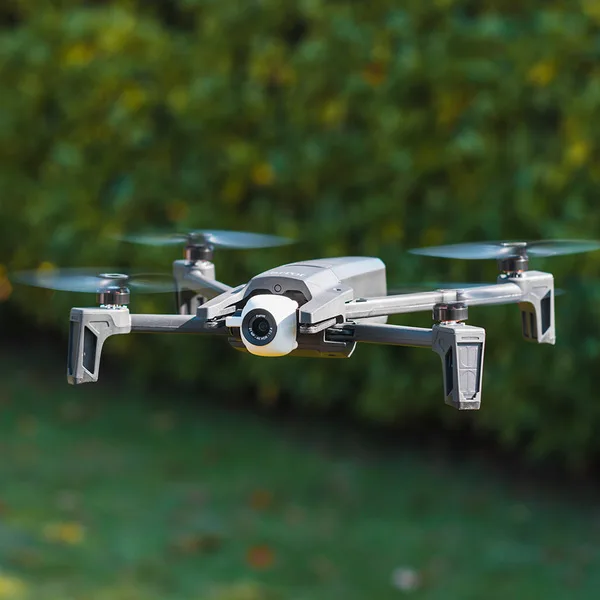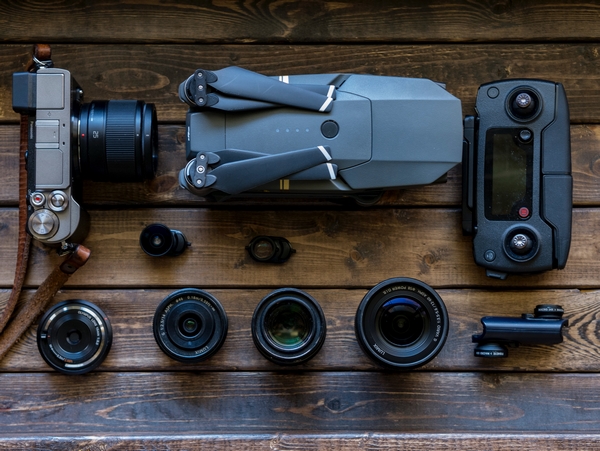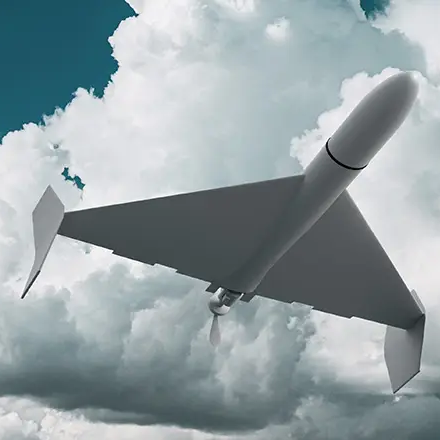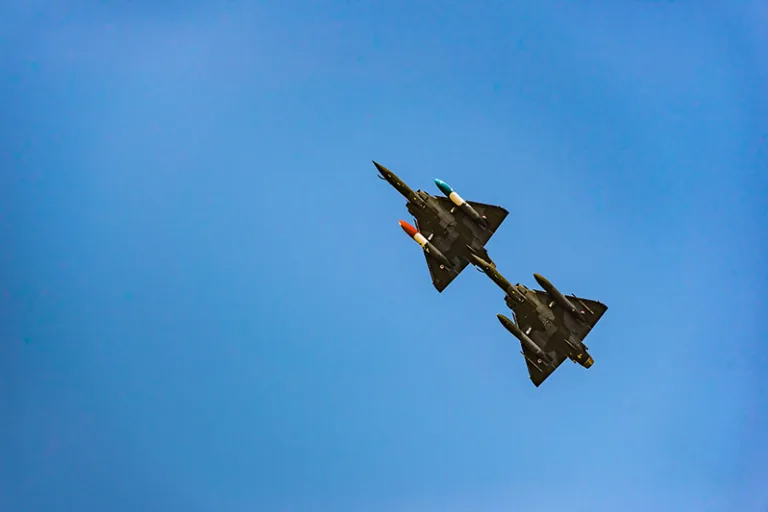Revolutionizing Delivery Services – The Drones Are Soaring to New Heights

In the fast-paced and ever-evolving landscape of delivery services, drones have emerged as a revolutionary force, fundamentally transforming the way packages are transported and reshaping the logistics industry. This blog post aims to provide an in-depth exploration of the transformative impact of drones on the delivery services sector, covering various aspects such as their aerial advantage, efficiency in motion, cost-effective logistics, challenges in regulations and technology, environmental sustainability, future trends, and the overall shift in the delivery industry.
The Aerial Advantage
Drones, often referred to as Unmanned Aerial Vehicles (UAVs), have rapidly disrupted numerous industries, with delivery services standing out as a prime example. The ability to navigate through the skies provides a unique advantage over traditional ground-based transportation methods. This aerial advantage not only offers a faster and more direct route to the destination but also introduces a level of flexibility that ground vehicles struggle to achieve.
The ability of drones to bypass geographical barriers and traffic congestion is a game-changer. In urban areas with dense traffic, drones can seamlessly maneuver through the airspace, reaching their destinations without being hindered by congested roads. This advantage becomes particularly significant in time-sensitive deliveries, where speed and efficiency are paramount.

Delivery Services – Efficiency in Motion
One of the hallmark benefits of incorporating drones into delivery services is their unparalleled speed. Drones can navigate directly to their destination, avoiding the traffic congestion that often plagues ground-based delivery vehicles. This translates into quicker deliveries, meeting the growing demand for swift and efficient shipping. Consumers, accustomed to the convenience of rapid deliveries, find drones to be a solution that aligns with their expectations.
Moreover, the efficiency in motion extends beyond just speed. Drones can take direct routes, optimizing the delivery process and reducing the time and resources required for last-mile deliveries. This efficiency not only benefits businesses by reducing operational costs but also enhances the overall customer experience.
Cost-Effective Logistics
The integration of drones into delivery services has the potential to bring about significant cost savings. Traditional delivery methods involve complex logistics, multiple personnel, and a fleet of vehicles to handle various stages of the delivery process. In contrast, drones streamline this process, requiring fewer resources for last-mile deliveries. This not only reduces the operational costs associated with personnel and vehicle maintenance but also minimizes the environmental impact by lowering fuel consumption.
Furthermore, the cost-effectiveness of drone delivery services has the potential to reshape the economics of the delivery industry. Small and medium-sized businesses, which often face challenges in competing with larger enterprises on delivery speed and costs, can now leverage drones to level the playing field. This democratization of delivery capabilities opens up new possibilities for a diverse range of businesses.
Overcoming Challenges – Regulations and Technology
While the potential benefits of drone delivery services are clear, the widespread adoption faces regulatory challenges. Countries around the world are navigating the complexities of integrating drones into airspace while ensuring safety and security. The primary concerns include the potential for collisions with manned aircraft, privacy issues, and the need for clear guidelines on flight paths.
However, the industry is actively addressing these challenges through continuous advancements in technology. Obstacle avoidance systems, sophisticated GPS tracking, and improved battery life are among the technological innovations that contribute to the safe integration of drones into airspace. Collaboration between regulatory bodies, businesses, and technology developers is essential to establish standardized protocols that ensure the responsible and secure deployment of drone delivery services.
The regulatory landscape is evolving, with many countries developing frameworks to accommodate the growing demand for drone deliveries. Companies operating in this space must stay informed about the latest regulatory developments and actively engage with relevant authorities to ensure compliance and foster a conducive environment for the expansion of drone delivery services.
Environmental Impact – Greener Deliveries

Beyond efficiency and cost-effectiveness, drone delivery services contribute to environmental sustainability. The shift towards electric-powered drones further reduces their carbon footprint compared to traditional delivery vehicles powered by fossil fuels. This aligns with the global push for eco-friendly practices and positions businesses as responsible contributors to a greener future.
The environmental benefits of drone deliveries extend beyond emissions reduction. By optimizing routes and minimizing unnecessary stops, drones contribute to overall traffic reduction, leading to decreased congestion and lower carbon emissions. This environmentally conscious approach not only resonates with environmentally conscious consumers but also aligns with corporate social responsibility goals.
Future Trends and Innovations
The drone delivery landscape is continually evolving, with ongoing innovations shaping its trajectory. Businesses that aim to stay ahead must remain vigilant and adaptable to emerging trends. One notable trend is the development of swarming technology, enabling coordinated deliveries by multiple drones. This not only enhances efficiency but also opens up possibilities for synchronized deliveries, particularly in high-demand scenarios.
Advancements in Artificial Intelligence (AI) play a pivotal role in the future of drone deliveries. AI algorithms enhance navigation precision, enabling drones to navigate complex urban environments, avoid obstacles, and optimize routes dynamically. This level of precision is crucial for ensuring safe and reliable drone deliveries, especially in areas with intricate landscapes or dense population centers.
Additionally, developments in communication technologies contribute to the evolution of drone delivery services. Enhanced connectivity facilitates real-time communication between drones, ground control stations, and other elements of the delivery ecosystem. This connectivity is essential for managing multiple drones simultaneously, ensuring seamless coordination and monitoring of the entire delivery process.
Predictive analytics is another area where technology is making significant strides. By leveraging data from previous deliveries, weather conditions, and traffic patterns, businesses can optimize delivery routes, predict potential challenges, and enhance overall operational efficiency. This data-driven approach empowers businesses to make informed decisions, aligning with the user’s preference for data-driven strategies.
Soaring into the Future
As drones redefine the landscape of delivery services, businesses must adapt to remain competitive in this dynamic environment. Embracing the efficiency, cost-effectiveness, and environmental benefits of drone deliveries positions companies at the forefront of innovation. The skies are now the next frontier in the future of delivery services, and those who harness the full potential of drone technology stand to gain a substantial competitive advantage.
The integration of drones into delivery services signifies a seismic shift in how we envision the future of logistics. From expedited deliveries to environmentally conscious practices, the drone revolution is reshaping the delivery industry, propelling us into a new era of efficiency and innovation. Businesses that embrace this change position themselves as pioneers in a landscape where the sky is no longer the limit.
In Summary
In conclusion, the integration of drones into delivery services represents not just a technological advancement but a paradigm shift in the way we approach logistics. From the efficiency gained through aerial navigation to the cost-effectiveness and environmental benefits, drones are reshaping the delivery industry. The ongoing innovations and technological advancements further underscore the potential of drone delivery services to revolutionize the way businesses operate.
As businesses navigate this transformative landscape, it is crucial to remain informed about regulatory developments, technological trends, and consumer expectations. Engaging with industry stakeholders, participating in collaborative efforts to shape regulations, and investing in cutting-edge technologies are essential steps for businesses looking to thrive in the era of drone-dominated delivery services.
The journey into the future of delivery services is marked by the ascent of drones, soaring high above the conventional constraints of ground-based transportation. As businesses embrace this evolution, they not only position themselves as leaders in innovation but also contribute to a more efficient, sustainable, and connected future. The skies are no longer just a backdrop; they are the new frontier for the delivery industry, and the drones are leading the way.





Howdy! Someone in my Myspace group shared this site with us so I came to giove it a look.
I’m definitely enjoying the information. I’m bookmarking and will be tweeting this too my followers!
Fantastic blog and terrific design. https://www.waste-ndc.pro/community/profile/tressa79906983/